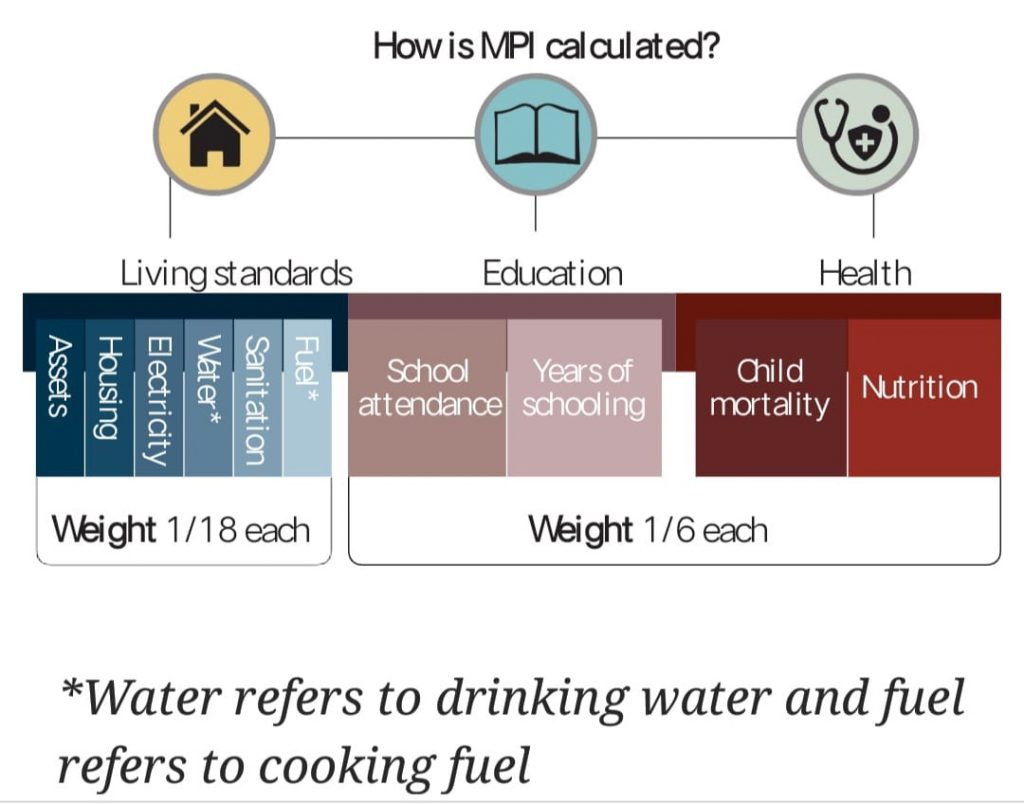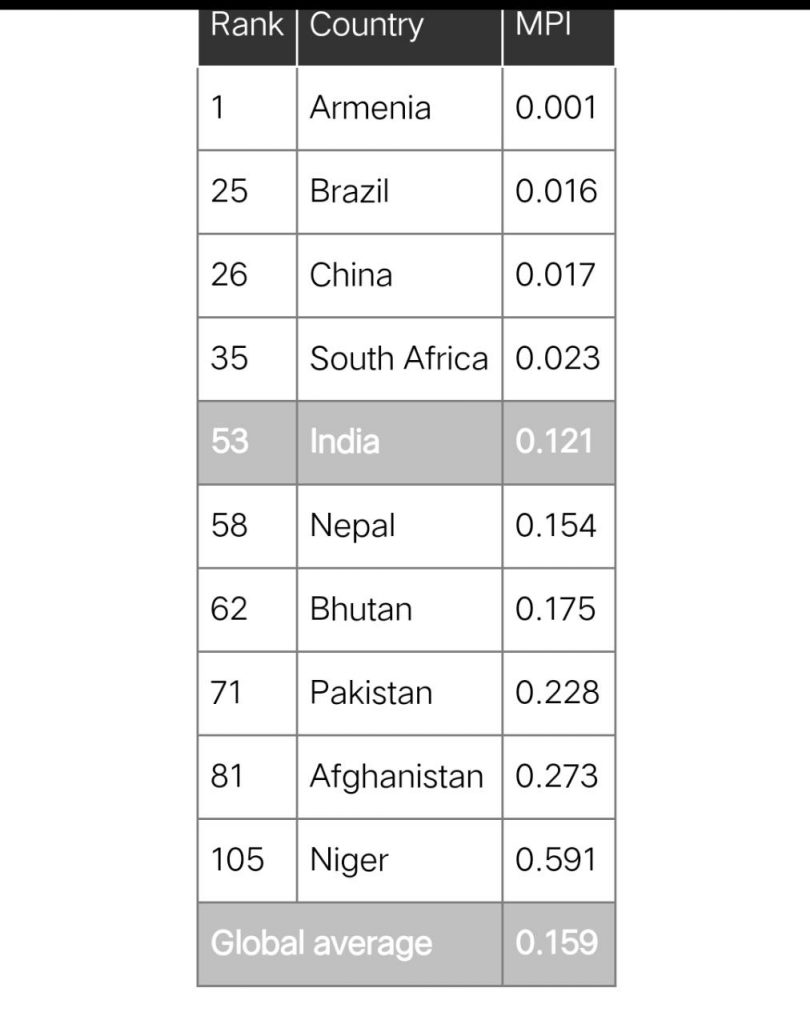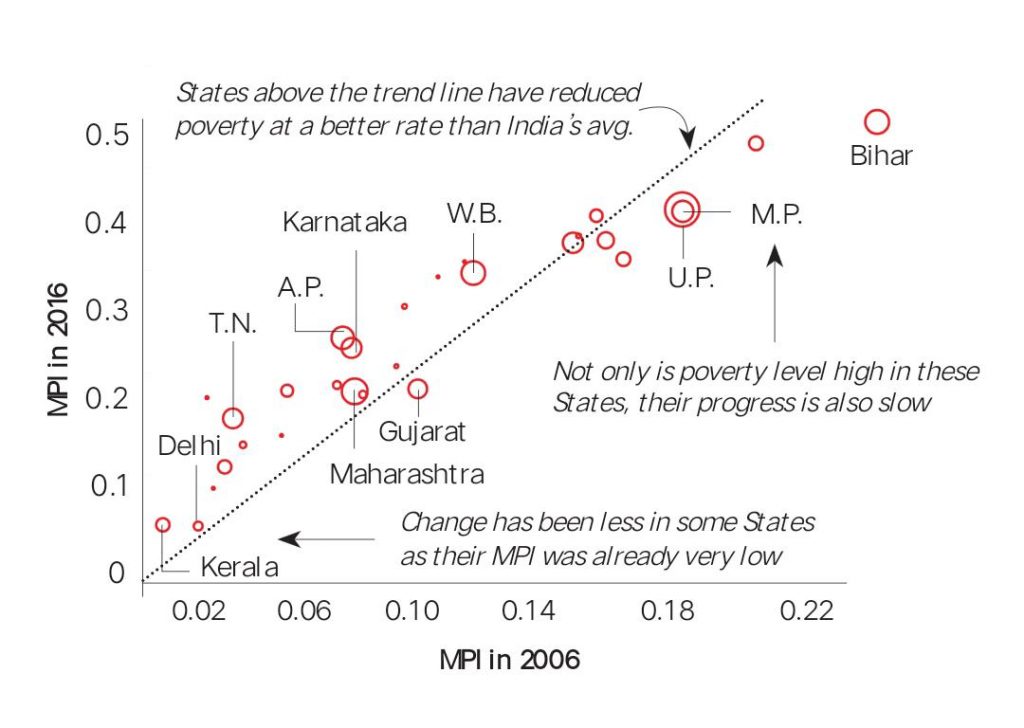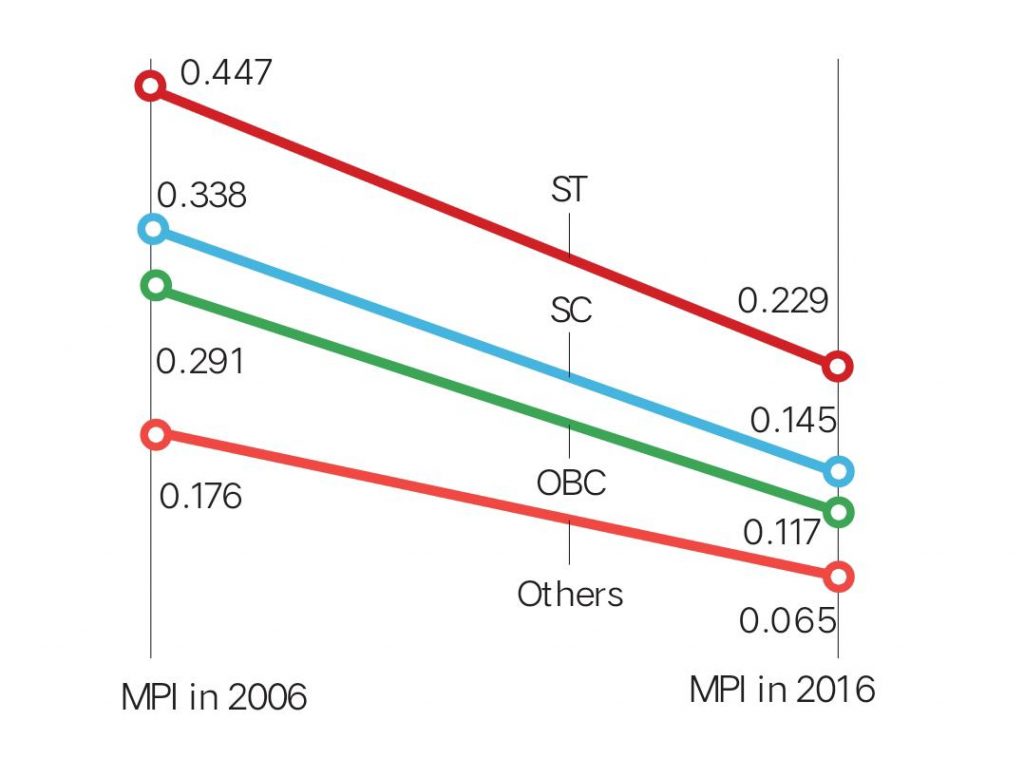Relevant for Sociology-Society & Essay:-
- While overall poverty in India has come down in 2016 compared to 2006, the progress has been uneven among States and communities.
- A look at the Multidimensional Poverty Index (MPI), calculated by Oxford Poverty and Human Development Initiative and UNDP reveal the variations.
What is Multidimensional Poverty Index?
- MPI is a measure that takes into account the incidence of poverty and the extent of deprivation. Going beyond just monetary measures, the MPI takes into account several factors. Here’s a look at the various indicators involved and their weightage:
- The calculation boils down to a value between 0 and 1. An MPI value of 1 indicates the highest deprivation level, while 0 indicates the lowest.
Global comparison:
- India’s MPI is lower than the global average of 0.159 and the South Asian countries, but is higher (worse) than BRICS countries (excluding Russia). The MPI has been calculated for 105 developing economies.
State & district comparison
- India’s MPI stood at 0.121 in 2016, half of what it was in 2006. The chart below plots MPI in 2016 vs MPI in 2006 for all States. States above the trend line have reduced poverty at a better rate than India’s average.
- Among districts, Alirajpur (0.402) and Jhabua (0.393) districts in Madhya Pradesh and Shrawasti (0.393) in Uttar Pradesh had the highest MPI. The worst 10 districts were in Madhya Pradesh, Uttar Pradesh and Bihar.
- The lowest MPI was in Kottayam district, Kerala — where the MPI stood at 0, indicating no deprivation. Thrissur and Ernakulam districts in Kerala had a marginal MPI of 0.001. In fact, the 10 districts with the lowest MPI were all in Kerala, except for Chennai in Mahe in Puducherry (0.001) and Chennai district in Tamil Nadu (0.05).
Variation across communities
- The MPI has gone down across communities, but it is more than double among Scheduled Tribes compared to Others.





